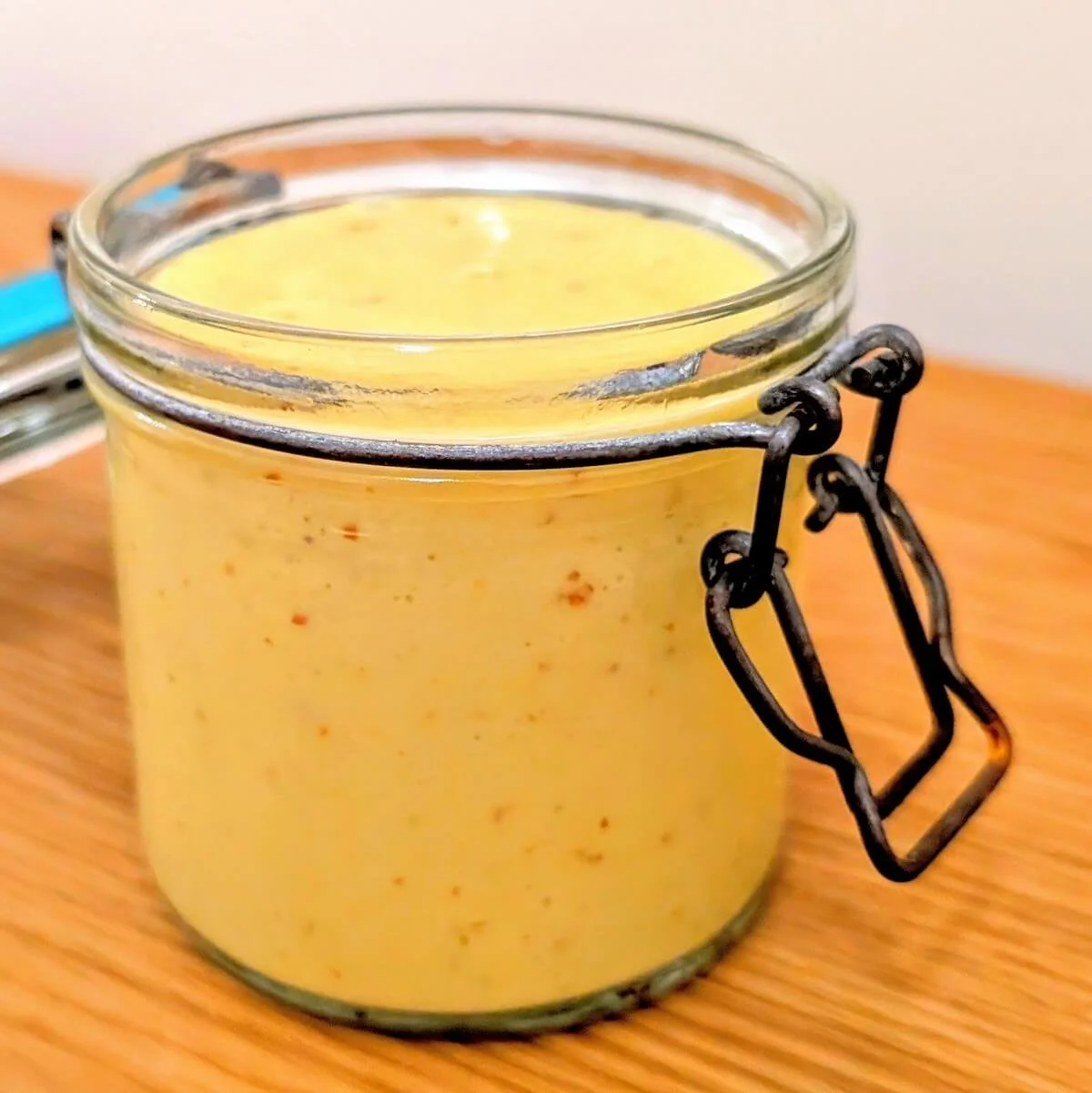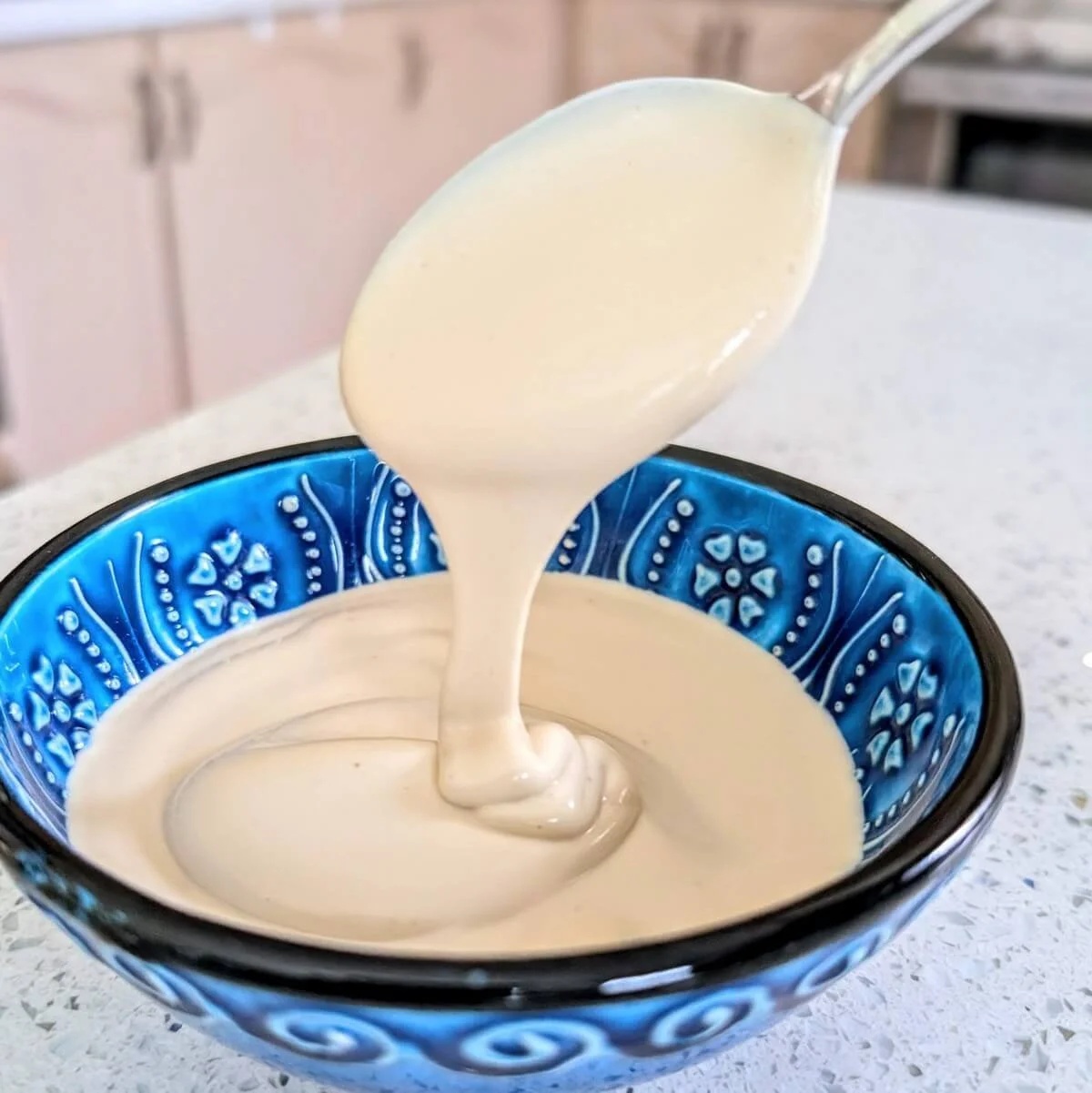Quick and Simple All Purpose Stir Fry Sauce
Transform your stir fry with this easy 5-ingredient sauce. Perfect for meats or veggies - and so much better than store-bought!
or read on for step-by-step instructions with photos
Benefits of Homemade vs. Store-Bought Stir-Fry Sauce
Store-bought stir-fry sauce is basically a simple mix of soy sauce, garlic, ginger, a thickener, lots of sugar, and preservatives.
It may be more convenient, but most of the ingredients to make a homemade version are probably already in your pantry. Plus, making your own sauce is way easier than you might think.
Here’s why homemade sauce is the way to go:
Control over ingredients - you know exactly what’s going in, which is perfect if you have dietary restrictions or just want to avoid unnecessary additives. Store-bought sauces are often loaded with sugar and salt, so making your own can be a much healthier option.
Budget-friendly - it’s cheaper in the long run, especially if you cook stir-fry often.
Enhanced flavor - fresh ingredients mean better taste, especially when it comes to fresh ginger and garlic. Plus, you can tweak the recipe however you like.
Versatility - this homemade sauce works with any combination of veggies, meats, or tofu. Besides stir-fry, it can be used as a salad dressing, marinade, or dipping sauce.
Quick & easy - you can whip up a batch in minutes with just a few pantry staples.
When I realized how much easier and tastier it was to make homemade stir-fry sauce I never bought a store-bought bottle again. I’m not a big fan of overly sweet sauces, so being able to control the sweetness was a big bonus.
Even though this simple recipe only has a few ingredients, it’s packed with flavor. You can always substitute or add ingredients to customize your sauce - see the substitutions section for suggestions.
Once you’ve experimented with a few different flavors, you’ll have a favorite recipe in no time. I’m sure you’ll never go back to the store-bought stuff either.
What you’ll need
Ingredients
1-inch ginger, peeled & grated or chopped
3 cloves garlic, grated, crushed, or chopped
½ serrano chili, crushed or chopped (deseeded for mild)
2 limes, juiced
1 teaspoon agave nectar (or maple syrup, honey, or sugar)
¼ cup soy sauce
2 tablespoons sesame oil
Equipment
Knife & cutting board or grater
Mixing bowl & spoon
Makes: ½ cup sauce (4 portions)
Prep: 5 min
How to make it
Step 1
Prep the aromatics.
Grate, finely chop, or crush the ginger, garlic, and chili. Add them to a bowl.
You can see in the picture below my serrano was starting to turn orange, but it is indeed a serrano chili.
Step 2
Add the liquids.
Add the lime juice, agave nectar, soy sauce, and sesame oil to the bowl with the aromatics.
Step 3
Mix well.
Stir everything together until the ingredients are well incorporated and the agave nectar has dissolved. Add to your stir-fry at the end of cooking, letting it cook for a couple of minutes for best flavor.
Best Stir-Fry Technique: Why I Cook Everything Separately
So, you’ve got the sauce, but what about making the actual stir fry?
Traditional stir-frying is all about high heat, quick cooking, and fresh ingredients. You gradually add everything to a super hot wok, finish with the sauce, and serve immediately - the whole process should only take a few minutes.
But at home, we often don't have a proper wok or a heat source that stays hot enough during cooking. This can leave you with overcooked or undercooked ingredients that steam rather than fry.
My solution? Cook all the ingredients separately. This way, you get the correct doneness for each ingredient, then simply toss them together with the sauce at the end.
This method takes the stress out of cooking and gives you the most control over the finished product. It may take a few extra minutes, but it’s worth it for that perfect texture!
A Step-by-Step Breakdown of How I Cook My Stir-Fry
Step 1
Mise en place.
The French term for "everything in its place," ensures smooth execution since everything will cook quite quickly.
Prep your veggies, stir-fry sauce, protein, and any sides like rice or noodles before you begin. Arrange veggies in separate piles on a tray and marinate the protein with some of the stir-fry sauce.
Step 2
Cook ingredients separately.
Using a heavy-bottomed pan or wok, stir-fry each ingredient over high heat with a touch of oil until they are tender yet crisp. After cooking, set aside on a tray and continue with the next ingredient.
I used a stovetop cast-iron griddle for my stir-fry (pictured below), as the kitchen I was working in was not stocked with large pans. Typically, at home, I like to use a large stainless steel pan.
Step 3
Cook the sauce.
Once all the stir-fry veggies and proteins are cooked and set aside, quickly cook the stir-fry sauce in a large pan for a couple of minutes. Then combine everything back in the pan, coat with the sauce, and reheat for a couple of minutes before serving.
Given the minimal equipment in our travel rental, I was doing a lot of improvising - I used a large pot to set aside the cooked ingredients and a small pan to cook the sauce, then poured the sauce into the pot while stirring to coat all the ingredients. Just use what you’ve got on hand for similar tasty results!
Step 4
Serve.
Serve your perfectly cooked stir-fry with rice, or noodles, or enjoy it on its own!
My tips
To thicken - add 2 tablespoons of cornstarch and ¼ cup of water to the stir-fry sauce, ensuring to mix well before adding it to the pan. Cook for a couple of minutes until the sauce has thickened.
Use the right cookware - to ensure even cooking, use a pan with a heavy base that can retain heat. I suggest using a good wok, a large stainless steel pan, or a cast-iron pan. Avoid using flimsy non-stick or aluminum pans.
Mise en place - prepping all your ingredients before starting to cook is essential since everything cooks so quickly. Make sure to cook any sides like rice or noodles ahead of time, prepare your sauce, cut your veggies, and marinate any proteins.
Stir-Fry Sauce Ideas
Marinate meats, tofu, veggies, or fish before baking or grilling.
Use it to flavor frozen vegetables for a quick side dish.
Make a simple stir-fry with random veggies in the fridge that may be starting to wilt, like that 1/8 piece of cabbage or 1 stick of celery.
Use as a dipping sauce for dumplings, spring rolls, or fresh rolls.
Make a salad dressing by mixing with olive oil and adding a little more acid, such as vinegar or lemon juice.
Use it as a base for Asian-inspired stews like Taiwanese beef noodle soup.
Substitutions
Soy sauce - use tamari, coconut aminos, or liquid aminos for gluten-free options. Opt for low-sodium soy sauce to reduce salt content.
Aromatics - use garlic and ginger powder or paste when fresh is unavailable. Enhance with shallots, green onions, garlic chives, galangal, lemongrass, or fermented products like miso, black bean paste, or gochujang. Finish with fresh herbs such as cilantro or chives.
Acid - substitute with rice vinegar, balsamic vinegar, apple cider vinegar, or Chinese black vinegar. Lemon juice can replace lime. Optionally, add acidity and depth of flavor with white wine, dry sherry wine, or Chinese rice wine.
Sweetness - replace agave nectar with maple syrup, honey, or sugar.
Sesame oil - while sesame oil has a distinctive flavor that I feel is an integral component of this sauce, use peanut, avocado, or olive oil as substitutes.
Chili - substitute serrano with jalapeno, finger chili, or bird’s eye chili. Use crushed red pepper flakes, cayenne pepper powder, sambal, sriracha, or any chili sauce you prefer for heat. Omit the chili for a milder sauce.
Storage
Store in an airtight container or jar for up to a week in the fridge.
Freeze in small containers or ice cube trays for up to 3 months.
Dietary Notes: Dairy-free, Egg-free, Vegan, Vegetarian, Low-carb
That’s it, enjoy!
I love making this recipe on the road. Most basic kitchens have everything you need for a simple stir-fry, and it's one of the healthiest and easiest meals to put together.
Plus, having extra sesame oil and soy sauce on hand makes it easy to make a quick Asian-inspired salad dressing.
Wherever you are, I hope you have fun making your homemade stir-fry sauce - and maybe make it a little different each time for some tasty variations!
Summary
Easy Homemade Stir-Fry Sauce Recipe
Elevate your meals with this quick 5-minute sauce! Perfect for stir-fry, salads, or as a dipping sauce for dumplings and spring rolls.
Makes: ½ cup sauce (enough for 4 portions) Prep: 5 min
Ingredients
1-inch ginger, peeled & grated or chopped
3 cloves garlic, grated, crushed, or chopped
½ serrano chili, crushed or chopped (deseeded for mild)
2 limes, juiced
1 teaspoon agave nectar (or maple syrup, honey, or sugar)
¼ cup soy sauce
2 tablespoons sesame oil
Instructions
Prep aromatics. Grate, finely chop, or crush ginger, garlic, and chili. Combine in a bowl.
Add ingredients. Pour lime juice, agave nectar, soy sauce, and sesame oil into the bowl with aromatics.
Mix thoroughly. Stir until well combined and agave nectar dissolves. Add to stir-fry at the end and cook for a couple of minutes for best flavor.
Top Tips
To thicken your stir-fry sauce, mix 2 tablespoons of cornstarch with ¼ cup of water to the ingredients. Mix well before adding it to the pan, then cook until thickened.
Use heavy-base cookware like a wok, large stainless steel pan, or cast-iron pan for even cooking, and avoid flimsy non-stick or aluminum pans.
Prep all ingredients before starting to cook your stir-fry. Cook sides, prep sauce, chop veggies, and marinate proteins to streamline your stir-fry cooking process.
Cook stir-fry ingredients separately to control texture and avoid steaming. Combine with the sauce and reheat at the end for perfect results.
Ready to elevate your stir-fry with this versatile homemade sauce? Leave a comment below if you've given this recipe a try!
Enjoy!











































